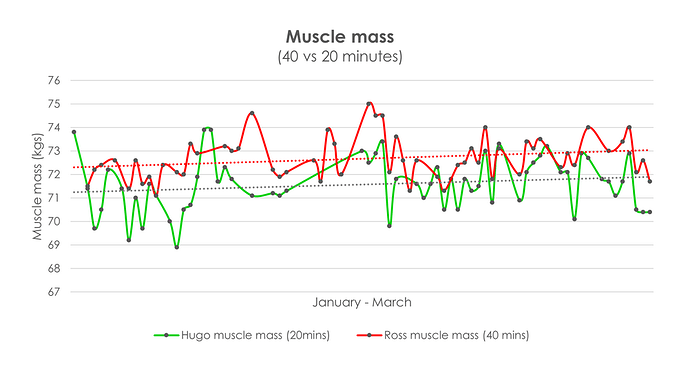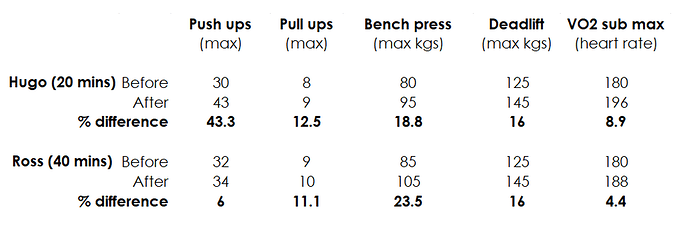Not a lot, it turns out.
https://www.theturnertwins.co.uk/fitness/40-vs-20-minute-workout
They each gained about a pound of muscle:
I found this article to be refreshing, because this is the way normal people gain muscle mass. 1 pound every 4 months is 4-5 pounds a year, which I think is a realistic amount for pretty much anyone. Can you gain more than that? Sure, if you’re a 15 year old Arnold Schwarzenegger working out 3 hours a day. But for most people, 5 pounds a year is a reasonable amount.
And they have interesting data like this:
To me, this is refreshing also, because in 3 months, they really only gain one pull up. It’s taken me years to get to 7 pull ups, so at least I don’t feel so bad considering they are younger and leaner than I am.
The only detriment for me is that I wish the test were longer. For instance, for deadlifts, they gained 20kg in 4 months. I’d guess that wouldn’t continue, because if it did, that’s 80kg/year, so in 5 years, that’d be 400kg + their starting 125kg = 525kg, or 1157 pounds. There are very few people deadlifting 1157 pounds.








 Really do need to run the experiment again with Hugo working out longer.
Really do need to run the experiment again with Hugo working out longer.